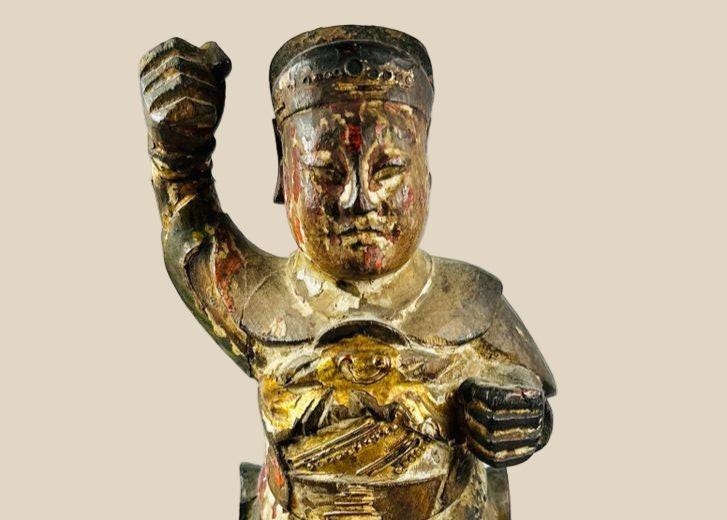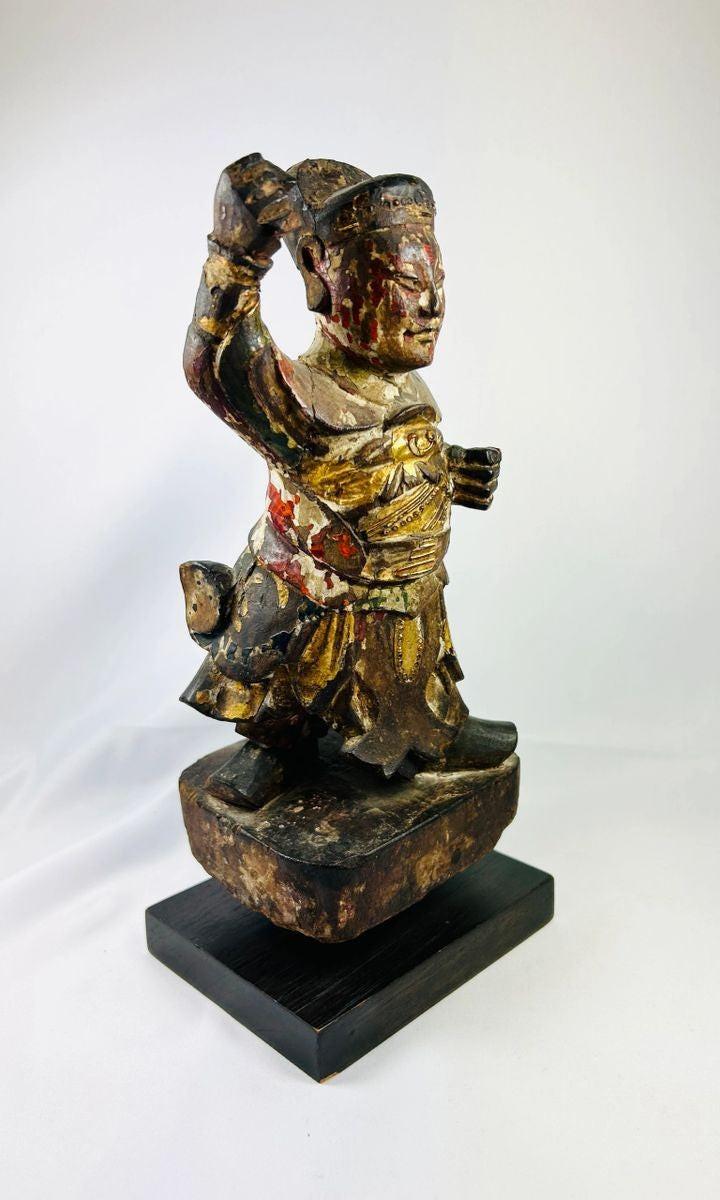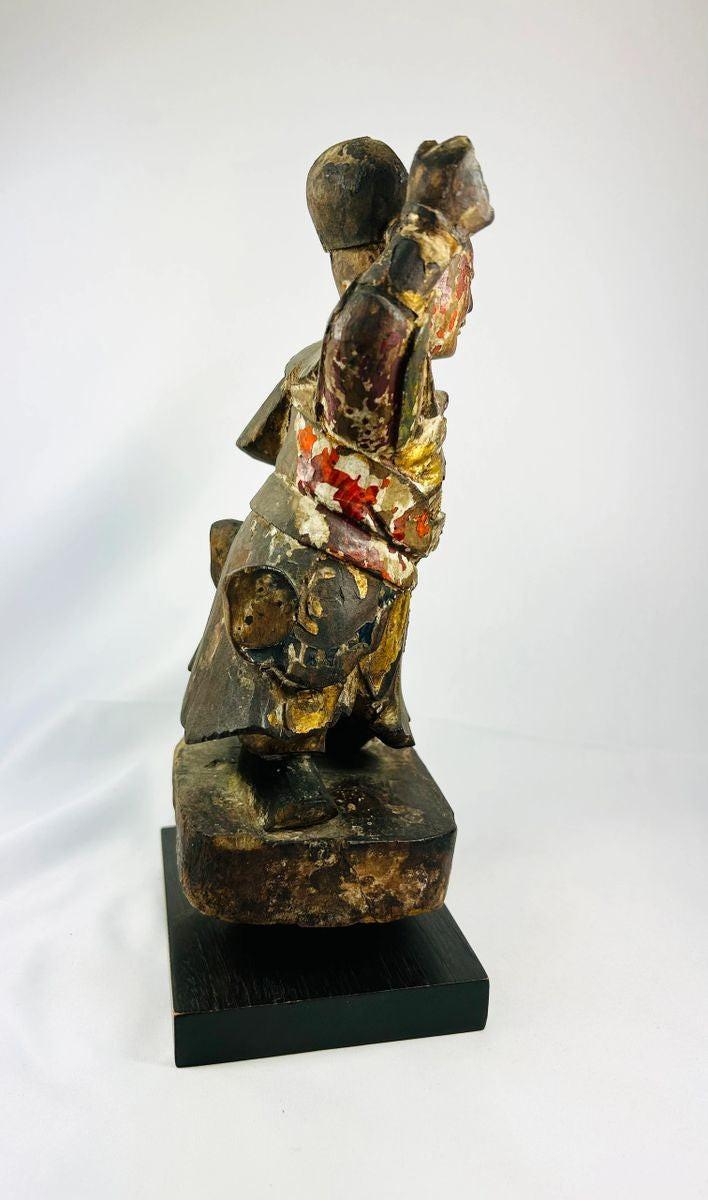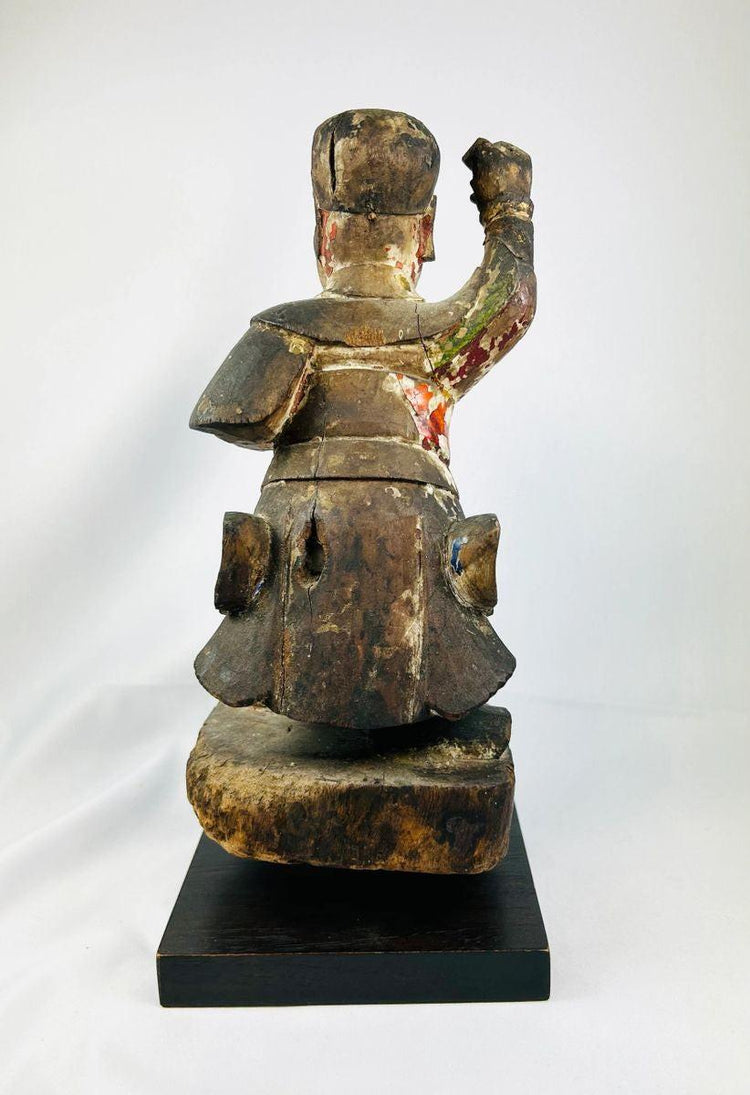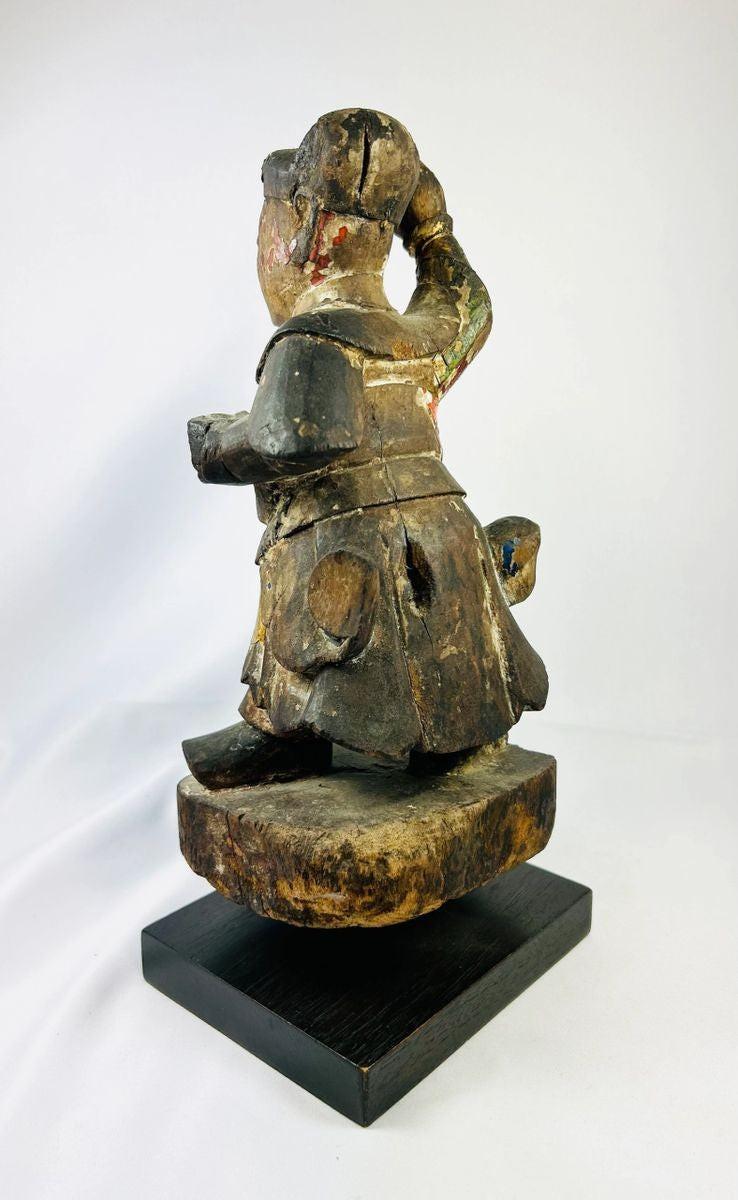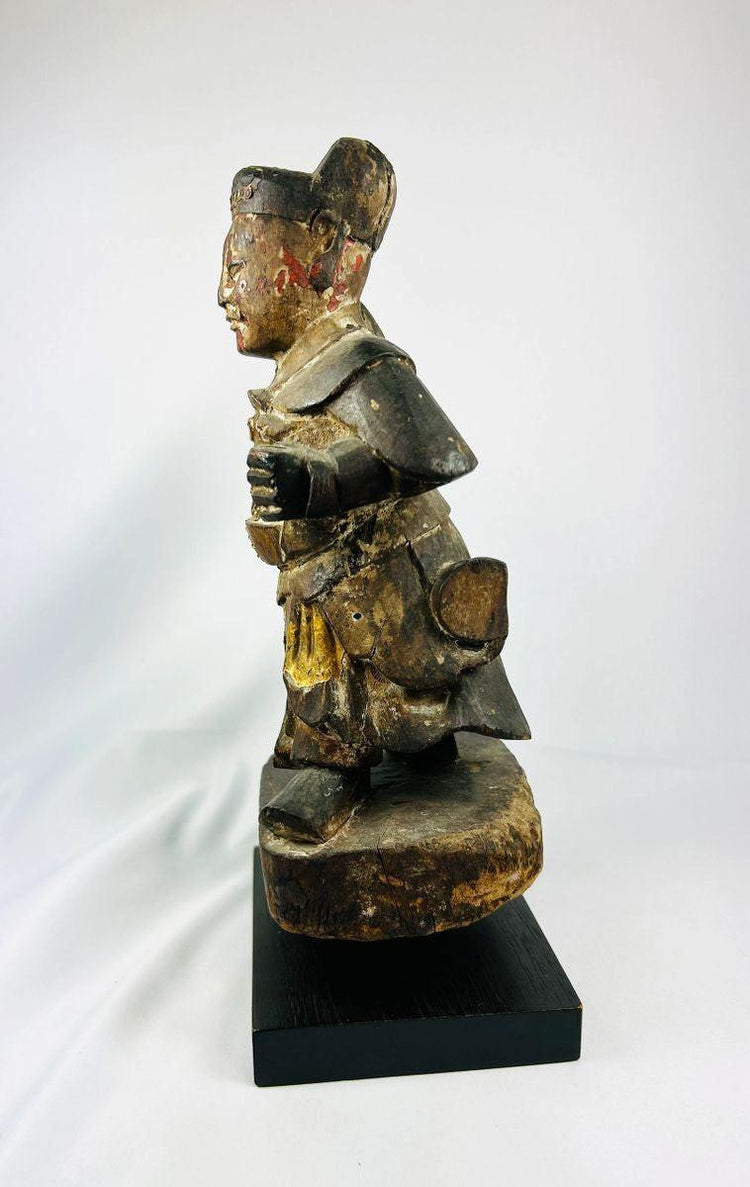Chinese Wooden Sculpture | Wei Tuo Pusa | Early 19th Century
Description
More
Less
Historical Context & Origin
Region: China (Qing Dynasty)
Material: Carved and painted wood
Period: Early 19th Century (1644–1912)
Description
This stunning Qing Dynasty wooden statue of Wei Tuo Pusa (Skanda), one of the eight divine protectors in Chinese Buddhism, exemplifies the spiritual and artistic mastery of 19th-century Chinese religious sculpture. Measuring approximately 11 inches in height, the guardian figure is carved with striking detail and mounted on a custom black wooden base. With a raised arm that once held a symbolic object or weapon, the piece embodies Wei Tuo’s role as protector of temples, scriptures, and practitioners of the Dharma.
Features
- Carved wooden figure of Wei Tuo Pusa in dynamic posture
- Intricate warrior’s armor adorned with detailed carving
- Traces of red, gold, and black pigment highlighting ceremonial vibrancy
- Raised arm suggesting original weapon or attribute (now absent)
- Mounted on custom black wooden base for display
Cultural Significance
Wei Tuo Pusa, known in Buddhist tradition as Skanda, is venerated as a divine guardian and enforcer of Buddhist law. Statues such as this were commonly enshrined in temples, monasteries, and domestic altars to ward off evil spirits, safeguard the Dharma, and bring protection and prosperity. The martial presence of Wei Tuo, captured in this figure’s intense expression and ornate armor, reflects both the religious devotion and the artistic sophistication of Qing-era artisans.
Condition
Well-preserved with remnants of original pigment. Natural surface wear, minor cracks, and aged patina consistent with age enhance both authenticity and collector value.
Dimensions (approximate)
Height: 11 in
Age
Early 19th Century (Qing Dynasty)
Learn More
Explore the origins and temple significance of Wei Tuo Pusa (Skanda): Wei Tuo Pusa – Buddhist Guardian History
Discover related Qing-era relics and authentic Chinese antiquities in our gallery: Ancient Chinese Artifacts & Cultural Relics – Relic And Rarity
Description
Historical Context & Origin
Region: China (Qing Dynasty)
Material: Carved and painted wood
Period: Early 19th Century (1644–1912)
Description
This stunning Qing Dynasty wooden statue of Wei Tuo Pusa (Skanda), one of the eight divine protectors in Chinese Buddhism, exemplifies the spiritual and artistic mastery of 19th-century Chinese religious sculpture. Measuring approximately 11 inches in height, the guardian figure is carved with striking detail and mounted on a custom black wooden base. With a raised arm that once held a symbolic object or weapon, the piece embodies Wei Tuo’s role as protector of temples, scriptures, and practitioners of the Dharma.
Features
- Carved wooden figure of Wei Tuo Pusa in dynamic posture
- Intricate warrior’s armor adorned with detailed carving
- Traces of red, gold, and black pigment highlighting ceremonial vibrancy
- Raised arm suggesting original weapon or attribute (now absent)
- Mounted on custom black wooden base for display
Cultural Significance
Wei Tuo Pusa, known in Buddhist tradition as Skanda, is venerated as a divine guardian and enforcer of Buddhist law. Statues such as this were commonly enshrined in temples, monasteries, and domestic altars to ward off evil spirits, safeguard the Dharma, and bring protection and prosperity. The martial presence of Wei Tuo, captured in this figure’s intense expression and ornate armor, reflects both the religious devotion and the artistic sophistication of Qing-era artisans.
Condition
Well-preserved with remnants of original pigment. Natural surface wear, minor cracks, and aged patina consistent with age enhance both authenticity and collector value.
Dimensions (approximate)
Height: 11 in
Age
Early 19th Century (Qing Dynasty)
Learn More
Explore the origins and temple significance of Wei Tuo Pusa (Skanda): Wei Tuo Pusa – Buddhist Guardian History
Discover related Qing-era relics and authentic Chinese antiquities in our gallery: Ancient Chinese Artifacts & Cultural Relics – Relic And Rarity
You May Also Like


















